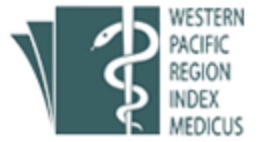Antiaging activities of Muntingia calabura Leaf Aqueous Extracts (MCE) on Testicular Histology, Spermatogenic Proliferation, and Testosterone Level of D-Galactose-Induced Mice Model
DOI:
https://doi.org/10.31436/imjm.v24i03.2795Keywords:
Muntingia calabura, testosterone, aging, spermatogenesis, seminiferous tubuleAbstract
INTRODUCTION: Male aging may disrupt spermatogenesis and induce intratesticular redox imbalance, leading to testicular damage. Muntingia calabura leaf extracts (MCE) have potent antioxidant activity, but in vivo reports in the male reproductive system aging are limited. This research aimed to determine the effects of MCE on testicular histology and testosterone levels in the D-galactose-induced aging mice model. MATERIALS AND METHODS: Plasma and testicular tissue obtained from 20 male Mus musculus strain Balb/C which were divided into 5 groups: normal; aging; aging+ Muntingia calabura leaf aqueous extracts (MCE) 35 mg/kg; aging+MCE 70 mg/kg; and aging+vitamin C 28 mg/kg. Treatments were scheduled orally for 4 weeks; aging condition was induced using oral 500 mg/kg D-galactose for 6 weeks before treatments. Plasma testosterone was determined using ELISA, seminiferous tubules’ diameter, spermatogenesis score, and Leydig cell number were examined with routine staining, and the nuclear expression of Ki-67 was performed via immunohistochemistry. RESULTS: The MCE-treated aging group had higher seminiferous tubules’ diameter, spermatogenesis score, Leydig cells’ number, and percentage of cells expressing Ki-67 compared with the untreated group (p < 0.005), and the optimum dose was 70 mg/kg. However, testosterone levels of the MCE group did not significantly differ from those of others. CONCLUSION: Administration of MCE in D-galactose-induced aged mice improved seminiferous tubule diameter, spermatogenesis score, Leydig cells’ count, and spermatogenic cell proliferation, but not testosterone level.
Downloads
Downloads
Published
How to Cite
Issue
Section
License
All material submitted for publication is assumed to be submitted exclusively to the IIUM Medical Journal Malaysia (IMJM) unless the contrary is stated. Manuscript decisions are based on a double-blinded peer review process. The Editor retains the right to determine the style and if necessary, edit and shorten any material accepted for publication.
IMJM retain copyright to all the articles published in the journal. All final ‘proof’ submissions must be accompanied by a completed Copyright Assignment Form, duly signed by all authors. The author(s) or copyright owner(s) irrevocably grant(s) to any third party, in advance and in perpetuity, the right to use, reproduce or disseminate the research article in its entirety or in part, in any format or medium, provided that no substantive errors are introduced in the process, proper attribution of authorship and correct citation details are given, and that the bibliographic details are not changed. If the article is reproduced or disseminated in part, this must be clearly and unequivocally indicated.










